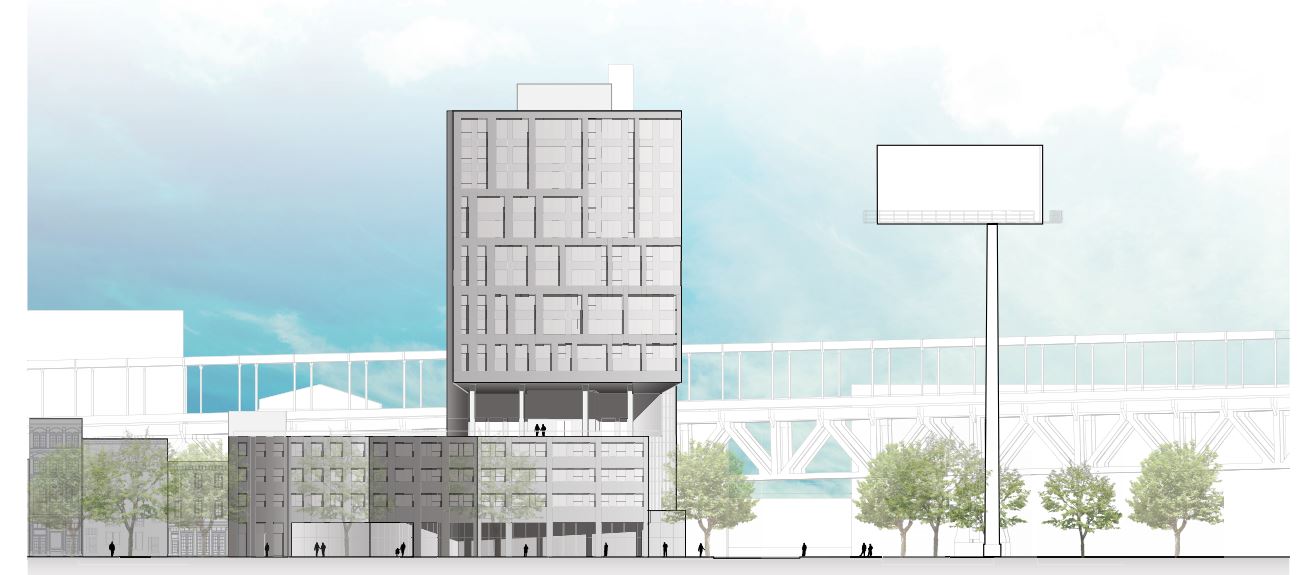Diaz stumps for inclusionary zoning to expand affordable housing

In a policy statement released Tuesday morning, Nelson Diaz said that if his mayoral campaign is successful he’ll push for a policy of inclusionary zoning that would require 20 percent of units in new apartment buildings to be set aside for lower-income residents.
Citing his work as a lawyer at the Department of Housing and Urban Development in the 1990s, when he issued a pioneering legal opinion that opened the door for private developers to work on public-housing projects, Diaz said that increasing access to affordable housing is key to making Philadelphia a “City of Opportunity.”
“We’ve lost 7,000 units of affordable housing, and have a 7-year backlog to get into PHA today,” Diaz said in the release. “The situation is so desperate that PHA isn’t even adding more people to the waiting list. That’s not acceptable.”
In the policy statement, Diaz said he would favor an 80/20 inclusionary zoning policy, with nearby residents given preference for reduced-rate units.
Inclusionary zoning takes a variety of forms in cities across the country. In some places, it’s mandatory: all new residential development requires units to be set aside for people making some percentage of the Area Median Income (AMI). In other places, it’s based on bonuses: developers can build beyond what the site’s zoning allows if they set aside a certain portion of units for lower-income residents.
Pressed for details, Diaz told PlanPhilly he would advocate for a mix of mandatory and optional inclusionary zoning.
“In any project being built with public dollars or support, inclusionary zoning would be mandatory and permanent,” Diaz said in an email sent by a spokesman. “… For purely private development, I would favor density bonuses. The goal is to leverage existing expenditures and programs as much as possible, to limit costs while creating the most new housing.”
Diaz said he would also advocate for a mixed-income inclusionary zoning scheme, where some units would be set aside for low-income residents earning 50 percent of AMI and some for moderate-income residents, earning up to 80 percent of AMI.
Median income for the Philadelphia area, which includes surrounding suburban counties, is just over $55,000 for individuals, according to federal guidelines. Within city limits, however, the median income is around $37,000, according to census figures. That means that an individual could actually earn around 20 percent more than the local median income and still qualify for a reduced-rate, moderate-income apartment.
Diaz said he’d be flexible about whether the policy would apply to new developments of all sizes.
“I am open to a conversation about where the cutoff should be, but believe 25 units is the optimal starting point for full implementation,” he said. “The law would be structured to avoid creating perverse incentives for the construction of 24-unit developments.”
Philadelphia already has some level of bonus-based inclusionary zoning in its code. Developers can earn floor-area bonuses in high-density commercial districts if they set aside at least 10 percent of residential units for moderate-income individuals (80 percent AMI). The units must be designed and built to similar standards as the market-rate units, and the reduced-rate requirement is removed after 15 years. In lieu of building affordable units, developers can earn the same density bonuses by contributing money to the Philadelphia Housing Trust Fund.
Beth McConnell, the policy director for the Philadelphia Association of Community Development Corporations, said she would welcome conversations about expanding inclusionary zoning in Philadelphia. Her group recently released a report focused on encouraging equitable development across the city, though the platform does not endorse an expanded inclusionary-zoning policy.
McConnell said PACDC has looked at the policy closely throughout the years, but she tends to think that it works best in very strong real estate markets. She said that while it’s a benefit to create reduced-rate units in new development projects, other affordable-housing strategies can have a greater impact for a greater number of low-income residents. In its report, PACDC recommends doubling the city’s funding to the Housing Trust Fund, which works to build and repair affordable housing for residents earning a range of incomes.
In Philadelphia, a development at 205 Race Street in Old City is the first to claim density bonuses for mixed-income housing, as previously reported by PlanPhilly. Despite benefiting from a number of zoning amendments, that project has yet to move forward.
Read more about Diaz’s platform on Al Día.
WHYY is your source for fact-based, in-depth journalism and information. As a nonprofit organization, we rely on financial support from readers like you. Please give today.






